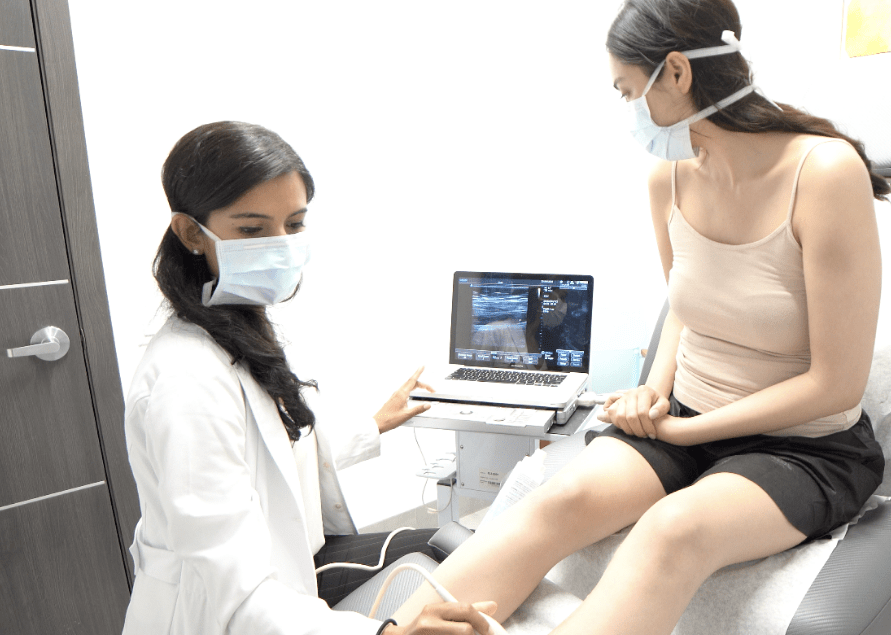Are you experiencing swollen, twisted, or bulging veins in your legs? These could be varicose veins. Varicose veins are a common condition that affects many people, and they occur when the veins in your legs become enlarged and twisted. They are more common in women than in men, and they tend to occur more frequently as you age. In this article, we will explore how varicose veins in legs develop, what causes them, and what you can do to treat them.
What are Varicose Veins?
Varicose veins are enlarged veins that appear swollen, twisted, and raised on the skin surface. They usually develop in the legs, but can also occur in other parts of the body. Varicose veins occur when the valves in your veins stop functioning properly, causing blood to pool and the veins to become enlarged. This can lead to a number of symptoms, such as pain, swelling, aching, restless leg syndrome, and more.

What Causes Varicose Veins?
There are a number of factors that can increase your risk of developing varicose veins:
- Age: As you age, your veins become less elastic and more prone to stretching and twisting, making them more susceptible to developing varicose veins.
- Gender: Women are more likely to develop varicose veins than men due to hormonal changes during pregnancy and menopause.
- Family history: If other members of your family have varicose veins, you are more likely to develop them as well.
- Obesity: Being overweight puts extra pressure on your veins, making them more prone to developing varicose veins.
- Sitting or standing for long periods of time: When you sit or stand for extended periods, blood can pool in your legs, putting extra pressure on your veins and causing them to enlarge.
- Injury: Trauma or injury to your legs can damage the veins, leading to varicose veins.
How Do You Get Varicose Veins in Legs?
Varicose veins develop as a result of weakened or damaged valves in your veins that impede blood flow, causing it to pool and the veins to become enlarged. Normally, your veins have one-way valves that help blood flow upward toward your heart. When these valves become damaged or weakened, they may not close completely, allowing blood to flow backward and pool in the veins. This excess blood puts pressure on the walls of the veins, causing them to bulge and become enlarged. Varicose veins can cause a range of symptoms, including pain, swelling, and aching, and can lead to more severe conditions if left untreated.
Varicose Veins & Skin Color: Is There a Link?
It’s essential to note that varicose veins can affect people of all skin types, including African American individuals. Although varicose veins may be more visible on lighter skin, they can still be effectively diagnosed and treated in individuals with darker skin tones.
Our board-certified vein doctors at Long Island Vein Treatment have extensive experience in treating patients of all skin types and can provide personalized care to meet the unique needs of each patient. We use advanced diagnostic technology and minimally invasive treatments to ensure that all of our patients receive the highest quality care, regardless of skin type.
How to Treat Varicose Veins?
At Long Island Vein Treatment, we offer a range of minimally invasive treatments:
- Sclerotherapy: This treatment involves injecting a solution directly into the affected vein, causing it to collapse and fade over time.
- Endovenous Laser Ablation (EVLA): This procedure uses laser energy to seal off the affected vein, redirecting blood flow to healthy veins.
- Radiofrequency Ablation (RFA): Similar to EVLA, RFA uses heat to close off the damaged vein and redirect blood flow to healthier veins.
- VenaSeal: This treatment uses a medical adhesive to seal off the affected vein, redirecting blood flow to healthier veins.
- Ambulatory Phlebectomy: This procedure involves removing the affected vein through a series of small incisions.
Before recommending a specific treatment, we perform a duplex ultrasound to determine the root cause of your varicose veins and develop a personalized treatment plan. This allows us to tailor our treatment approach to your individual needs and provide the most effective and efficient care possible. Our minimally invasive treatments for varicose veins are safe, effective, and typically require little to no downtime.
In addition to medical treatments, there are also lifestyle changes you can make to reduce your risk of developing varicose veins. These include:
- Exercise regularly: Regular exercise can help improve circulation and strengthen your veins, reducing your risk of developing varicose veins.
- Wear compression stockings: Compression stockings can help improve circulation and reduce swelling in your legs.
- Elevate your legs: Elevating your legs can help reduce swelling and improve circulation.
- Avoid sitting or standing for long periods of time: If you must sit or stand for extended periods, take frequent breaks to move around and stretch your legs.
- Maintain a healthy weight: Maintaining a healthy weight can help reduce the pressure on your veins, reducing your risk of developing varicose veins.
Visit Long Island Vein Treatment
At Long Island Vein Treatment, our board-certified vein doctors specialize in minimally invasive treatments for varicose veins, including sclerotherapy, endovenous laser ablation, radiofrequency ablation, VenaSeal, and ambulatory phlebectomy. If you’re experiencing symptoms of varicose veins, don’t hesitate to reach out to us for a consultation.
At Long Island Vein Treatment, we have multiple locations to better serve our patients. Our South Shore location in West Islip is conveniently located right on the border of Suffolk County and Nassau County. Our North Shore location in Jericho is just off the Long Island Expressway and Northern State Parkway. We also have a location in the Hamptons in partnership with MDCS Dermatology in Hampton Bays. Regardless of where you are on Long Island, we’re here to provide expert care for your venous needs.
Contact us today for a consultation and let us help you regain your confidence and comfort.